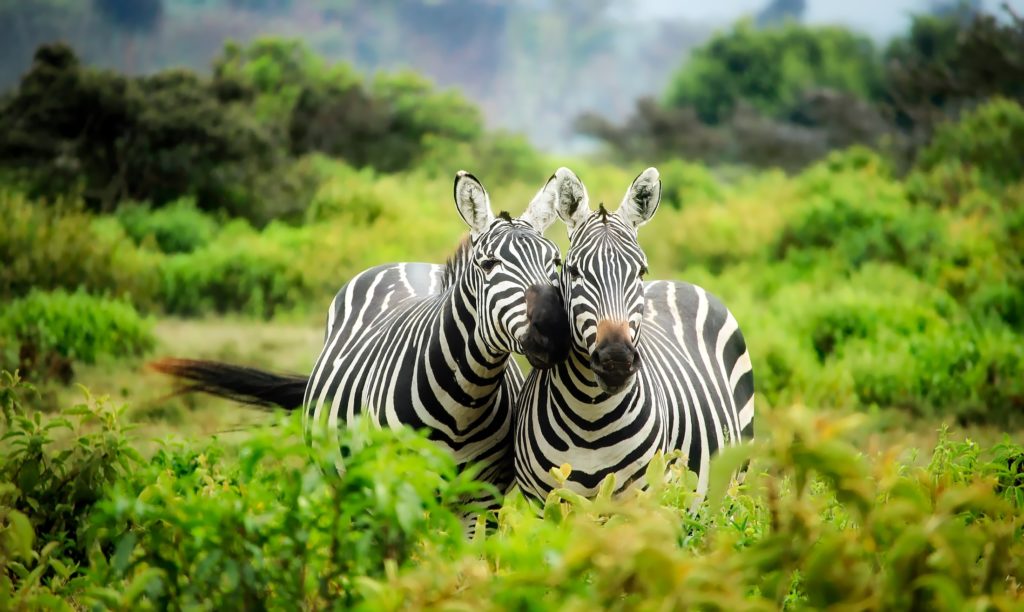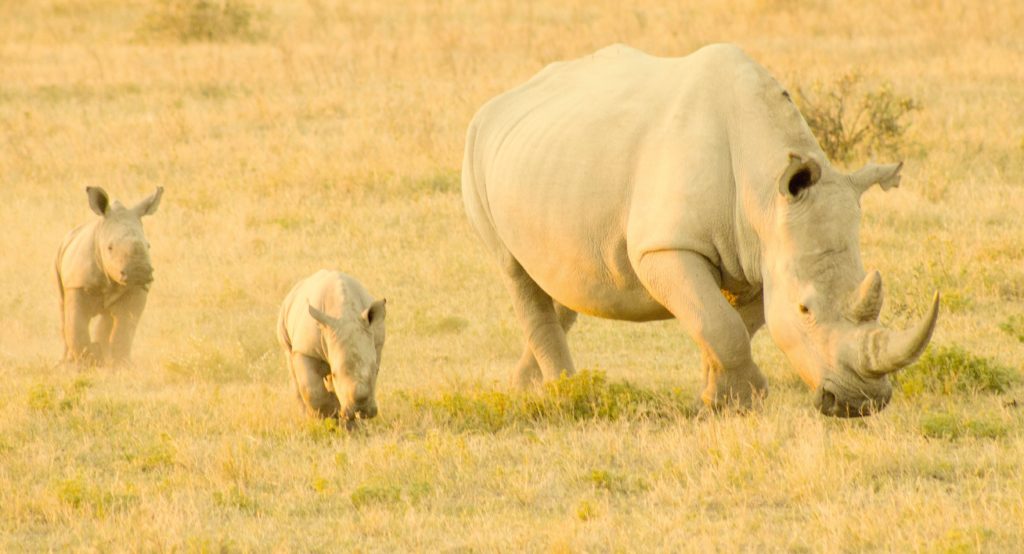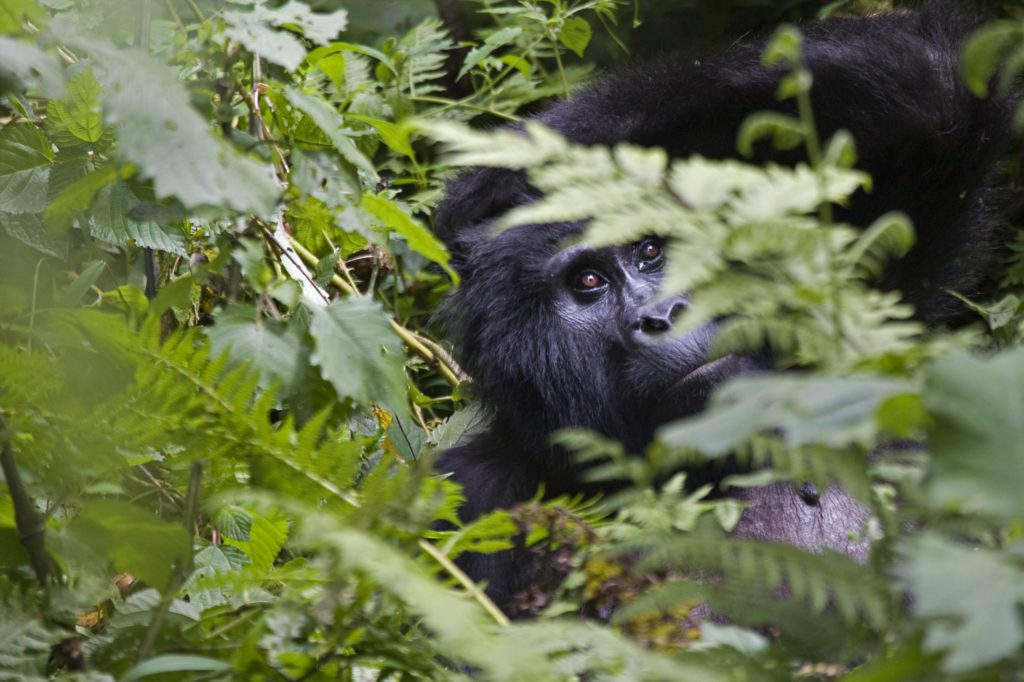Many African countries offer superb safaris within their private reserves and national parks. camps and lodges are set up to receive travellers and are wonderful starting points for exploring the savannah.
Discover the splendour of the African safari through our list of the five best safaris in Africa: which animals can you see there? When is the best time to head out? Follow our guide.
What is a Safari?
A safari is, according to the definition of the Larousse dictionnary, a “hunting of large, wild animals in Africa”. However, this definition has greatly evolved today, and safaris are now real opportunities to discover Africa and its wild animals, without hurting them and even helping their protection and conservation.
A safari in Africa is an important journey, planned well in advance and prepared in great detail, to discover magnificent landscapes, a complex history, people with amazing traditions and cultures, abundant wildlife and lush flora.
What animals do we see on a Safari?
The safari allows you to discover many wild animals, living in African parks and reserves, without interfering in their life.
It allows you to leave with photographs and memories of rhinos and elephants drinking at a waterhole, of lionesses and lions in the middle of a hunting session, of crocodiles and buffaloes with hippos basking in ponds, of zebras and wildebeest during the Great Migration looking to find milder land because of the climate, of cheetahs and leopards digging their meals in the shade of trees, of wild dogs and hyenas playing with their young, and of countless fairy-like birds.

A Safari in Kenya
If you go on a trip to Kenya, know that you can visit the elephant orphanage in Nairobi and bike to Hell’s Gate where a volcanic landscape with canyons, gorges, geysers and hot springs awaits you, and where many animals can be approached very closely. This is a unique opportunity to see giraffes and other herbivores on Crescent Island, after crossing Lake Naivasha by boat, where it is possible to observe the meals of the osprey. One of the highlights of a Kenya safari is watching the giant wild boar or bongo antelope in Mount Kenya Park. The hot-air balloon flight over the Masai Mara plains to admire herds of elephants and buffaloes is also breath-taking. Most safaris in Kenya plan the wildebeest crossing on the Mara River, filled with huge crocodiles. It is possible to meet the Masai people in their traditional village and even take a photo in Amboseli of an elephant in front of the Kilimanjaro. Finally, Kenya allows you to discover hippos lounging in the crystal-clear waters of the Mzima Springs but also the submarine observatory of Tsavo. For a more traditional exploration, you can opt for a triangular sailing boat trip (dohw) from Diani Beach to Kisite, enjoying the dolphins’ company.
A Safari in Tanzania
Fly with a hot-air balloon over the plains of the Serengeti! This excursion allows you to see many herds of wildebeest. The descent into the crater of Ngorongoro, perfectly circular, will also allow you to discover many predators and animals, who come to find refuge. You may have the opportunity to walk to Olduvai in the footsteps of the first men, from the cave to the small museum site. A must-see during your safari in Tanzania remains the observation of the famous Kilimanjaro, and its cloud bed whilst climbing to the top of Mount Meru, where it is possible to witness the migration of thousands of wildebeest along the banks of the canyon of Ndutu. It is also possible to participate in hunting and gathering activities of the Hadzabe people near Lake Eyasi.
Other safari options are possible, such as the boat trip on Rufiji River, where elephants settle for a drink on the banks of the stream. You can also opt for the walking tour of Ruaha Park with a guide to meet different animals. If you go to Tanzania, do not miss visiting the old town of Stone Town with Moorish architecture and 500 carved wooden doors. And what better way to complete your exploration than to swim with a whale shark in Mafia, in the clear waters of the Indian Ocean?
A Safari in Botswana
Go on an excursion in Mokoro on the waters of the Okavango Delta where you progress into the landscape, among the reeds and lilies to observe birds, frogs and insects as well as hippos and elephants swimming. For those going on a safari in Botswana, the Chobe River cruise is a must-do! You can then follow wild dogs in the middle of a hunting session in the private reserve of Kwando or Linyanti. The ideal will then be to opt for a 4×4 game drive to track wild animals off the beaten tracks. You will be able to see nearly 4000 rock paintings at Tsodilo Hills and giant baobabs in the south of Nxai Pan. You can also head towards Deception Valley and discover the famous brown hyenas. The helicopter tour will allow you to fly above, among other things, the sublime Okavango Delta: this site hosts large floodplains with islands of vegetation that serve as refuge for animals and are interconnected by a maze of animal tracks. This will give you the opportunity to tread the soil of the granitic island of Makgadikgadi. The site is 1km long and consists of rocks forming a supernatural cluster where baobabs come to life. Finally, crossing the desert will allow you to meet the representatives of the San people: the Bushmen. Exploring the country with these indigenous people will allow you to learn about their daily habits, including how to find fruits and edible roots, find water, and understand the tracks left by wild animals.

A Safari in Namibia
If you choose to start your Safari in Namibia by flying a hot air balloon above the Namib dunes, you can admire the typical red sand of the country and go meet the Himba in the Kaokoland. If you prefer to go in search of elephants, you will have to head off the beaten tracks and venture outside the parks and reserves, most notably in the rugged desert of the Damaraland. During your getaway in the country, you will have the opportunity to take a cruise in the beautiful lagoon of Walvis Bay, where you can observe many marine animals, such as sea lions and pelicans. Going on a safari in Namibia also offers the chance to hike in the Namib Desert. By heading out for 3 days, adventurers can learn to recognize animal tracks, track ostriches and oryx, and observe chameleons, lizards and insects. It’s easy to come across cheetahs in Otjiwarongo at the CCF Foundation and various animals drinking at a specially-lit spot for travellers in the heart of Etosha National Park. The place is ideally located since it allows to observe elephants, hyenas, giraffes, rhinos and lions almost uninterruptedly. Finally, an excursion on the Waterberg plateau will allow you to discover black antelopes the size of horses. If you decide to go on a safari in Namibia, do not miss the ghost town of Kolmanshop. This city almost buried in the sand offers a setting out of time, simply breath-taking.
A Safari in Uganda
The Murchison Falls National Park in Uganda allows all animals from Africa to be found in one place. The setting is sumptuous: the wild fauna evolves there freely in front of the famous waterfalls of the national park. Whether you choose to explore the park by land or by boat on the Nile, you can enjoy the beauty of this breath-taking waterfall. Kibale National Park is also home to many animals roaming freely, including chimpanzees in the middle of the forest. Furthermore, Queen Elizabeth National Park offers the unique opportunity to wake up to elephants, while enjoying an incredible view of the Twin Lakes. At every level, going on a safari in Uganda offers a unique experience. If you prefer the boat, the cruise on the Kazinga Channel is ideal. And if you dream of seeing arboreal lions – which often remain hidden – venture to Ishasha. Another fabulous excursion is the impenetrable forest of Bwindi in the Ruhija area, which allows travellers to meet mountain gorillas. Finally, visiting Kampala and its local market is the best way to complete your safari.

When to go on a Safari in Africa?
When going on a safari in Africa, it is best to go during the green season, otherwise known as the rainy season. It has the advantage of having fewer visitors. Photographers will appreciate bright colours and clean air, as the rain cleans the dust. This is also the time when animals have their cubs and where you can easily witness scenes of animal hunts. Be aware though: the disadvantage is that some parks are flooded, and some tracks are impracticable. But others enjoy an arid climate that you can visit without worry. This season starts in early spring and lasts all autumn. If you prefer to avoid the rain, it is best to travel between March and October, during the dry season. You will then see fewer plants and more animals, which you will often see hanging around watering troughs.
For more details on the best time to travel for your safari, visit K Travel’s dedicated article.
Why go on a Safari with K Travel?
For the past ten years, K Travel has been developing its know-how in tailor-made luxury travel planning for both first-time travellers and experienced adventurers. Working in collaboration with the best local partners and private guides, the experienced K Travel specialists will ensure you the organisation of an authentic and unique journey. Each luxury trip is fully personalized.
Each member of our team is dedicated and passionate about travel and safaris and is constantly testing new destinations to offer you the best stays based on very strict criteria.
Each suggested destination is based on a first-hand experience by the K Travel team, which allows to adapt the circuits to your requirements and your tastes. We are on hand from the moment we start planning your trip till your safe return home.
K Travel does not just plan, but organizes your luxury holidays (booking accommodation, yacht charter, plane charter, hot air balloon, 4×4, and other private services necessary for the smooth running of your safari).








